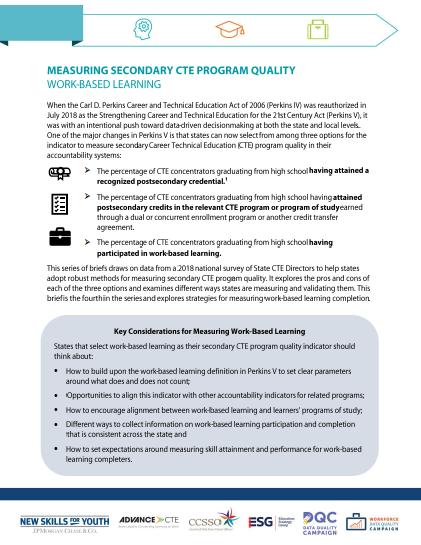The Carl D. Perkins Career and Technical Education Act (Perkins V) requires state leaders to select a new accountability indicator to measure the quality of secondary Career Technical Education (CTE) programs. This option is a new feature of Perkins V and gives states the opportunity to align their accountability systems with state priorities and needs. The three options Perkins V allows for the indicator are:
1) The percentage of CTE concentrators graduating from high school having attained a recognized postsecondary credential;
2) The percentage of CTE concentrators graudating from high school having attained postsecondary credits in the relevant CTE program or program of study earned through a dual or concurrenty enrollment program or another credit transfer agreement; and
3) The percentage of CTE concentrators graduating from high school having participated in work-based learning.
States can also include additional, separate measures of student success in CTE that are “statewide, valid and reliable, and comparable across the state” in addition to one of the three options listed previously.
This brief — the fourth in a four-part series — draws on data from a 2018 national survey of State CTE Directors to help states select and adopt robust methods for measuring secondary CTE program quality. This brief explores strategies for measuring work-based learning participation.







